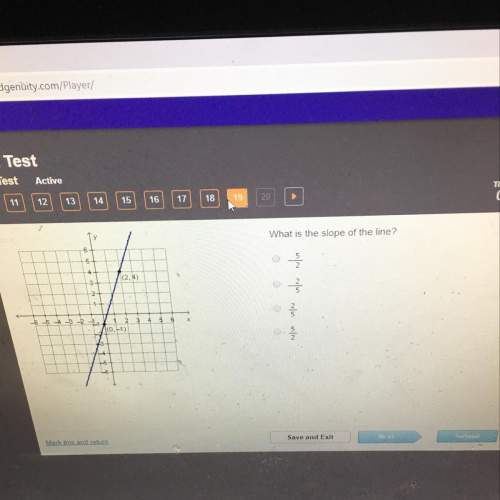
Mathematics, 04.08.2021 01:00 sonyav732
Look at the quadrilateral shown below: A quadrilateral ABCD is shown with diagonals AC and BD intersecting in point O. Angle AOB is labeled as 1, angle BOC is labeled as 4, angle COD is labeled as 2, and angle AOD is labeled as 3. Clara writes the following proof for the theorem: If the diagonals of a quadrilateral bisect each other, the quadrilateral is a parallelogram: Clara's proof For triangles AOB and COD, angle 1 is equal to angle 2, as they are vertical angles. AO = OC and BO = OD because it is given that diagonals bisect each other. The triangles AOB and COD are congruent by SAS postulate. Similarly, triangles AOD and COB are congruent. By , angle ABD is equal to angle CDB and angle ADB is equal to angle CBD. As the alternate interior angles are congruent, the opposite sides of quadrilateral ABCD are parallel. Therefore, ABCD is a parallelogram. Which is the missing phrase in Clara's proof? CPCTC property of parallelograms transitive property vertical angles theorem Question 3(Multiple Choice Worth 4 points) (02.06 MC) What conclusion can be made for c and e? Triangle ABC has side AB measuring c, side BC measuring 4 units, and angle ACB measuring 36 and a half degrees. Triangle ABC is connected to triangle ACD by shared side AC. Triangle ACD has side AD measuring e and angle ACD measuring 27 and 8 tenths degrees. Segments BC, AC, and DC are marked congruent. c ≥ e c ≤ e c > e c < e Question 4(Multiple Choice Worth 4 points) (02.04 MC) Jeremiah is working on a model bridge. He needs to create triangular components, and he plans to use toothpicks. He finds three toothpicks of lengths 5 in., 5 in., and 2 in. Will he be able to create the triangular component with these toothpicks without modifying any of the lengths? Yes, according to the Triangle Sum Theorem Yes, according to the Triangle Inequality Theorem No, according to the Triangle Sum Theorem No, according to the Triangle Inequality Theorem Question 5(Multiple Choice Worth 4 points) (02.01 MC) Triangle JKL has been ref

Answers: 3
Another question on Mathematics

Mathematics, 21.06.2019 18:40
That table shows measurements (in invhes$ from cubes with different side lengths. which pairs of variables have a linear relationship? check all that apply
Answers: 3

Mathematics, 21.06.2019 20:00
Prove that the value of the expression 7^8–7^7+7^6 is divisible by 43.
Answers: 1

Mathematics, 21.06.2019 20:30
Lola says these two expressions have the same value. expression a expression b which explains whether lola is correct?
Answers: 2

Mathematics, 21.06.2019 23:50
Solve for x in the equation x2 - 12x + 36 = 90. x= 6+3x/10 x=6+2/7 x= 12+3/22 x = 12+3/10
Answers: 2
You know the right answer?
Look at the quadrilateral shown below: A quadrilateral ABCD is shown with diagonals AC and BD inters...
Questions




Mathematics, 03.01.2021 01:20


Mathematics, 03.01.2021 01:20

Mathematics, 03.01.2021 01:20


Mathematics, 03.01.2021 01:20

Social Studies, 03.01.2021 01:20





Mathematics, 03.01.2021 01:20

Social Studies, 03.01.2021 01:20




Mathematics, 03.01.2021 01:20




